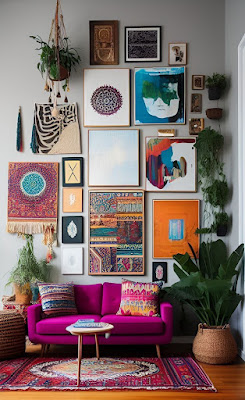"Master the Art of Interior Designing: Your Ultimate Guide"
"Master the Art of Interior Designing:
Your Ultimate Guide"
When considering transforming a living space into a great masterpiece of design and functionality, interior design plays an important role. Within this omnipresent collection, we will delve into the maze area of interior design, providing you with invaluable insights, advice, and strategies that will not only enable you to create luxurious environments but also expand your knowledge of this artistic discipline.
Understanding the essence of interior design
At its heart, interior design goes beyond mere aesthetics; it creates the art of shaping spaces that enhance their potential for existence. It combines simplicity, usability, and a deep understanding of patron needs and preferences. Interior designers, in short, stand as raconteurs who appoint spaces as their canvases.
Role of an Interior Designer
Interior designers play a variety of roles in their quest to develop a harmonious environment. They also work as architects, virtuosos, project overseers, and sometimes psychoanalysts. Their primary responsibility is to transform the patron's vision into reality while ensuring that the space remains practical, safe, and aesthetically pleasing.
Fundamentals of Interior Design
Before we delve into the intricacies of interior design, let us lay a strong foundation by looking at its fundamentals.
Spatial Idea
Efficient use of space is the core of any winning interior design effort. Interior designers carefully choreograph room configurations, keeping in mind the flow of movement, placement of furnishings, and functionality. The aim is to optimize each square foot while maintaining a sense of balance and harmony.
Color Psychology
Colors play an important role in determining the ambiance of a place. Warm colors like crimson and tangerine can create a relaxing atmosphere, while cool colors like blue and green create a feeling of calm. Interior designers carefully select the color palette to suit the intended function of the room.
Lights
Adequate lighting can be a hindrance or a curse for a design. Natural light promotes well-being, while artificial lighting can enhance focal points and ambiance. Interior designers are experts in selecting appropriate lighting and its placement to achieve the desired effect.
Textures and Components
Texture contributes depth and tactile appeal to a room. To evoke a sensual feel, interior designers cleverly combine an assortment of materials, including wood, glass, metal, and textiles. The choice of materials should complement the design theme and fulfill a practical function.
Securing visual balance and symmetry is an important aspect of interior design. Designers painstakingly select and arrange furnishings and embellishments to ensure that components complement each other and the surrounding space.
Now that we've outlined the basics, let's examine the methodical progression that interior designers follow when transforming a concept into a living, breathing design.
Counseling and Prerequisite Assessment
The odyssey begins with a comprehensive consultation during which the interior designer and conservator discuss objectives, inclinations, and financial limitations. This inaugural meeting is essential to assimilate the point of view and conditions of the patron.
Based on the data collected during the consultation, the designer conceptualizes an idea that encapsulates the patron's perspective. Mood boards, sketches, and color palettes often serve as mediums to communicate the proposed design trajectory.
Spatial Thinking and Blueprinting
Armed with a clear concept, the interior designer proceeds to map out the spatial arrangement. This involves locating furnishings, fixtures, and decorative elements to optimize functionality and fluidity.
Ingredients and Color Kalinga
Materials, colors, and textures are carefully selected to manifest the concept into reality. Interior designers consider longevity, maintenance, and aesthetics when making these selections.
Implementation and Project Oversight
Once the design plan is finalized, the project moves to the execution phase. Interior designers oversee construction, procurement, and installation, ensuring flawless implementation of the design.
The final touch includes embellishing the space with accents, artwork, and decorative furnishings that enhance the overall design. This step infuses character and personality into the finished interior.
Recommendations for DIY interior design
While professional interior designers provide expertise, homeowners can use a variety of cues and strategies to refine their spaces without professional help.













Comments
Post a Comment